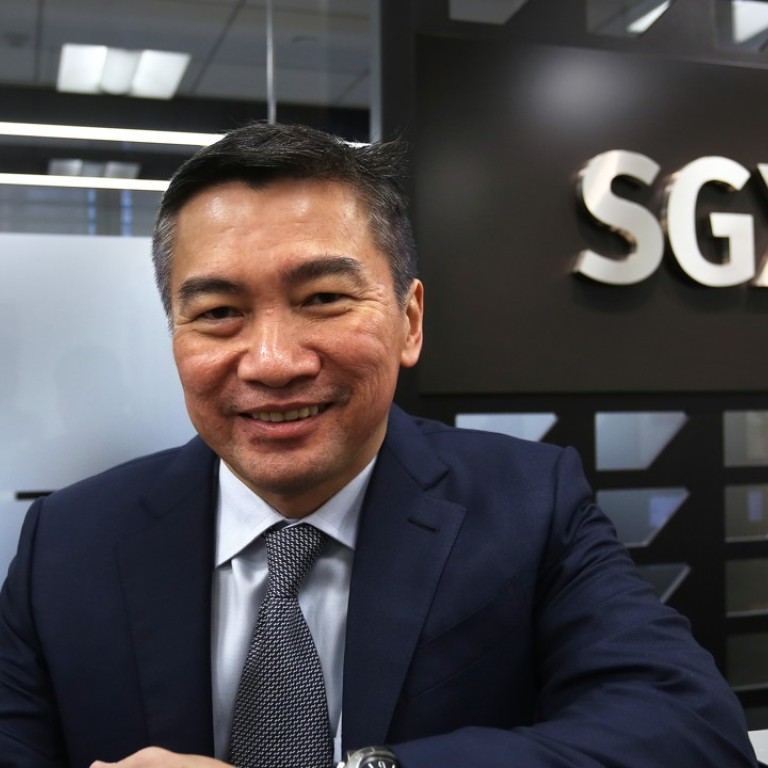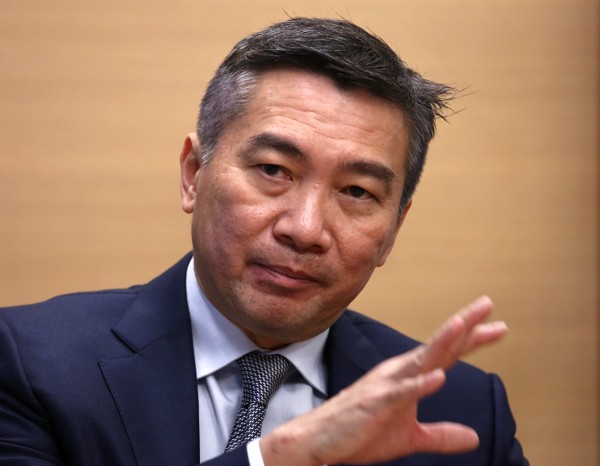
Singapore Exchange chief says Asia’s tech sector is big enough for more than one exchange to profit
‘Asian tech listings are in some ways, a new space... Yet no exchange has been able to establish a lead position,’ says Loh Boon Chye, chief executive officer of SGX
Asia’s booming technology landscape will become large enough for more than one stock exchange to cater for future initial public offerings (IPOs), according to the chief of Singapore’s bourse.
The sector’s explosion in the region has had leading regional and global exchanges vying for more tech listings, including Hong Kong, long seen as Singapore’s arch rival.
“Asian tech listings are in some ways, a new space,” said Loh Boon Chye, chief executive officer of the Singapore Exchange (SGX).
“Yet no exchange has been able to establish a lead position. Being a new space means there is room enough for a few players; each can take its own track.”
SGX considers technology – which includes telcos and media firms – among its priority sectors, with 76 technology firms listed already in Singapore, with a combined market capitalisation of US$64 billion.
At the end of the month, South Korea’s top mobile messenger operator Kakao Corp will list its global depositary receipts on the exchange, raising US$1 billion.
Loh claims Singapore’s edge lies in its “strong technology eco-system”, pillared by a supportive government.
Singapore offers plenty of government initiatives and grants, led by the National Research Foundation and official agencies, such as the Media Development Authority and statutory boards.
According to Startup Genome, the city state ranked 12th in the top 20 list of the world’s start-up eco-systems in 2017, down two places from the previous year. Hong Kong wasn’t even ranked, but Beijing and Shanghai are new entrants, at fourth and eighth respectively.
Still, heavy government backing can also work against entrepreneurship and commercialisation.
A recent survey of Singapore start-ups by the National University of Singapore’s Entrepreneurship Centre found that while more than half of the tech firms survived past five years in business, they were still generating little growth or employment.
Only 8.1 per cent of the 530 tech start-ups surveyed were considered “gazelles” – or high-growth firms that are increasing its revenue by 20 per cent annually.
SGX, however, insists that government support is not its only edge over rivals.
In November, it signed an agreement with the US’s Nasdaq that will allow concurrent and sequential listings on both exchanges.

Loh calls that his “east-west corridor”, and that it’s part of a wider strategy to draw more tech firms and start-up firms to list in Singapore.
He dismissed, however, suggestions by the local media that Singapore simply provides a stepping stone to Asian firms who ultimately want to go public in the US, but have yet to qualify.
“One can argue that it’s easier to explain tech to investors outside the region, but you can also argue that you need to be able to explain Asia or Southeast Asia to investors from outside Asia,” he said.
The crux often lies in helping investors understand Asian business models.
“Understanding how your model fits into distributing in Asia is equally important. You could then, because you are already Asian-focused, list on SGX first,” he said.
SGX is looking at prospects jointly with Nasdaq, but Loh declined to give details or pin down a time when any debut listing might happen.
He said the exchange’s engagement with techs and start-ups has also spilled into taking private stakes in some promising prospects.
SGX subsidiary Asian Gateway Investments last October took a 10 per cent share in Capbridge, a Singapore-based capital-raising platform it helped create in 2015, with a S$1.5 million (US$1.13 million) grant over three years.
“We will help companies tap series B funding upwards, allowing them access lists of investors,” Loh said.
Hong Kong stock exchange proposed revamping its listing rules last month to accommodate dual-class shareholding companies and biotech firms, without strong records of profitability, to avoid losing out on more IPOs by techs and new economy giants.
Dual-class share firms must be worth at least HK$10 billion (US$1.28 billion) and have annual revenue of at least HK$1 billion.
Technology companies with market caps of HK$10 billion or more that are already listed elsewhere will be eligible for a secondary listing in Hong Kong, under their existing shareholding structure.
Biotech firms would be able to list if their expected minimum capitalisation topped HK$1.5 billion.


